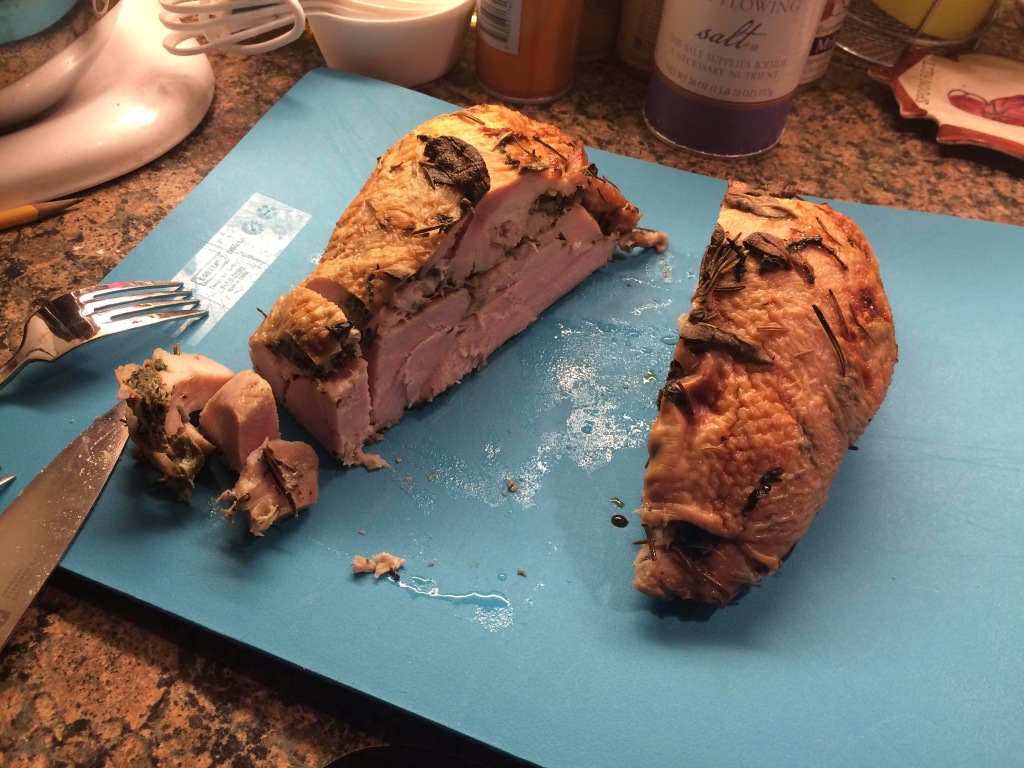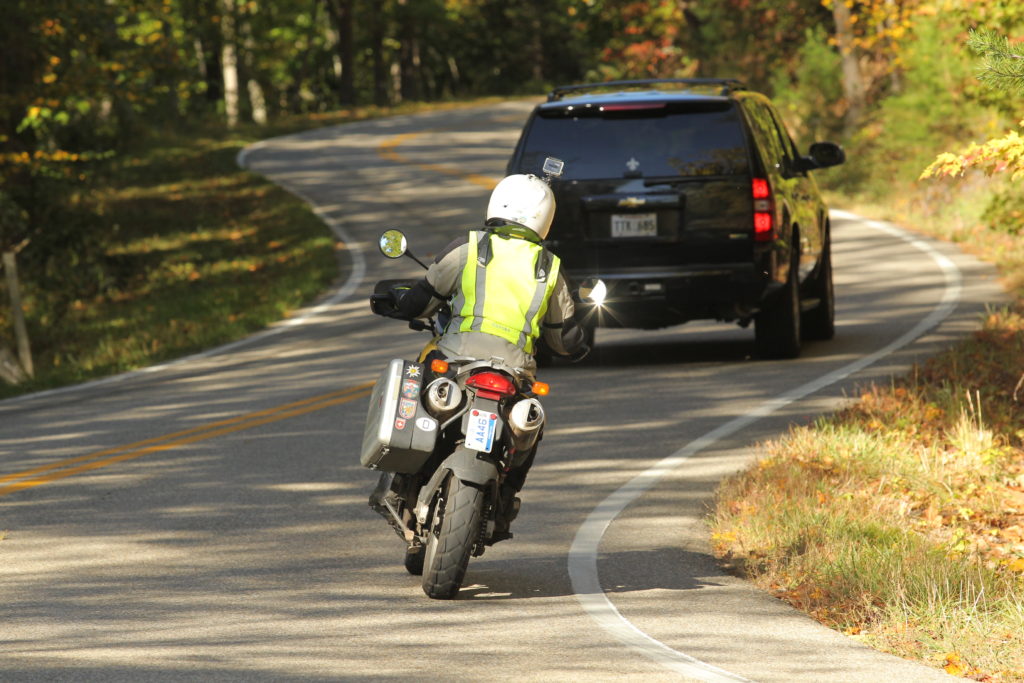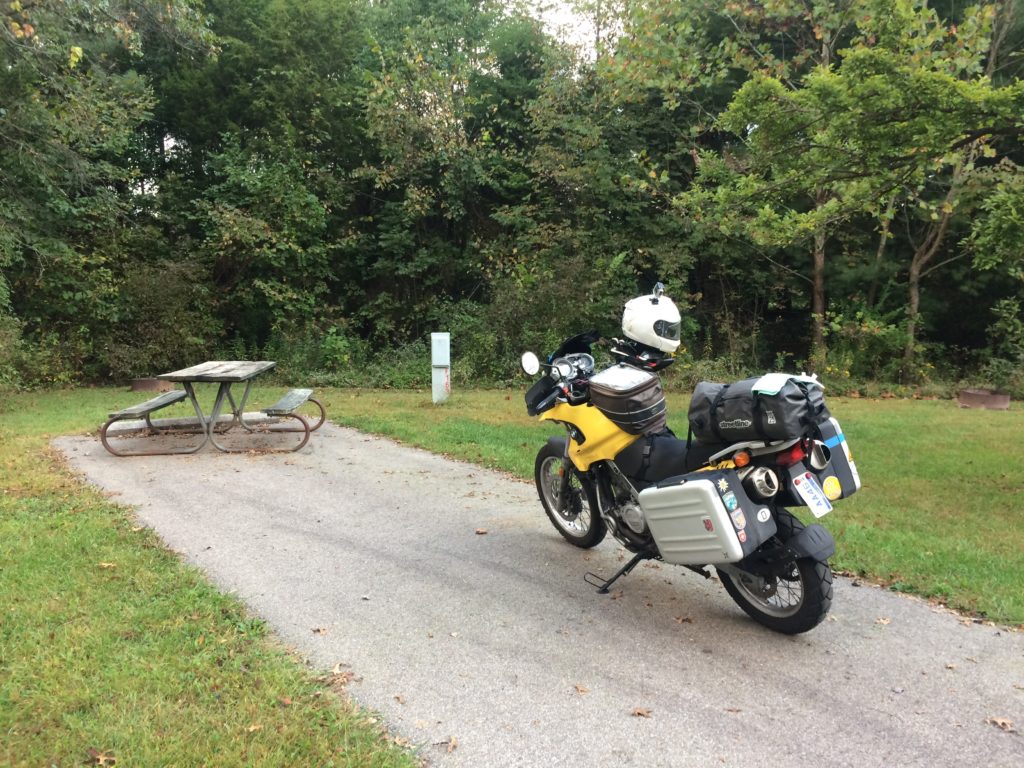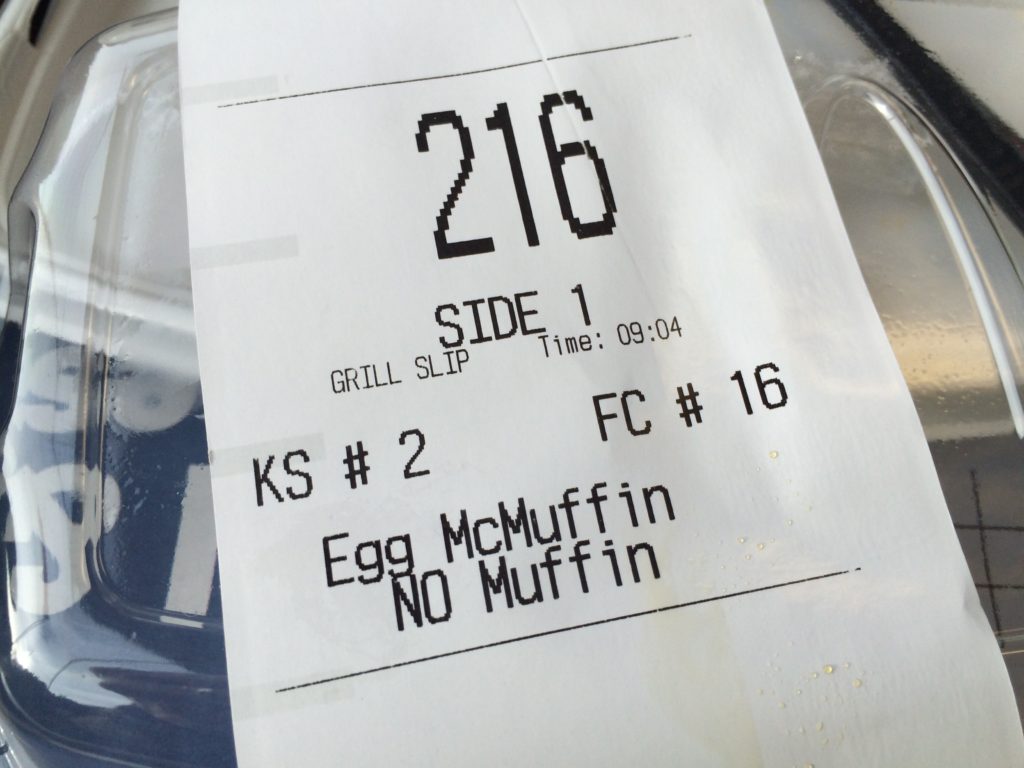Yeah, I should have posted this earlier, but Thanksgiving was a drawn out affair this year. Also, anyone who says that turkey is dry and boring has never had a properly prepared one.
Anyway, here goes, recipes included.
Brine a turkey in the following….
4c water
1/4c Kosher or other large crystal salt
1 T rosemary leaves
20 sage leaves
1 T herbs de Provence
1/4c dark brown sugar
1/2c maple syrup
1 t olive oil
Boil brine mixture until oil is absorbed by herbs. Cool. Add turkey and water to cover.
Place in fridge and let soak for 1-5 days. Longer means stronger flavor. Five days is realistically the limit.
Turn turkey over in brine daily.
Prior to roasting, remove from brine.
Strain brine and tuck strainings under turkey skin.
Roast turkey at 400F for 15 min, then reduce temp to 325F and roast until done.

Gluten-free crust – modified AHA
2c Pamela’s Artisan Flour Blend
3t baking powder
1/2 t salt
1/2 to 3/4c water
1/2c oil
Mix drys, add water and oil and blend. Add water as neede for texture.
Makes three crusts
Apple Pie
Oil crust as above
6 Ida Red apples, peeled and sliced thin
Cinnamon
Flour as needed.
Layer apples into lower crust with flour and cinnamon. Top with upper crust.Bake at 350 until done.
Pumpkin Pies
Filling – use the Libby recipe, it rocks

Cambric GF stuffing/dressing (You’ll figure out the name if you’re over 40)
2 loaves Schär multi-grain bread, cubed and dried
2 sticks butter
1.5# mushrooms, chopped small
1 head celery, chopped
1 medium onion, chopped small
1 clove garlic, diced (add as many as you want, really)
2 apples, chopped small
Fresh sage, rosemary, and thyme
1 qt chicken stock
a shot of Sriracha for the stock if you are so inclined
1T mushroom base for stock
Preheat oven to 350°F.
Melt butter in bottom of large stock pot.
Add mushrooms and sauté until soft.
Add vegetables and sauté until clear.
Add apples and sauté until aromatic.
Add herbs and sauté until aromatic.
Add stock and additions and cook until warm.
Spray a casserole with cooking spray.
Evenly spread out bread cubes in casserole.
Pour stock/veggie mix over bread cubes and mix up well.
Add water as needed to wet out all bread.
Cover with foil and bake until the texture is where you like it. Hotter oven (400°F) for more crispies. Remove the foil to improve crispies, leave it on for squishies
The stock/veggie mix can be made up ahead of time and kept cold until needed. But be prepared to reheat it first. The butter solidifies things and you need it in the bread, not in the veggies. Otherwise the texture of the final product will be crap.
Cranberry sauce
1 bag cranberries
1 orange
Water
Sugar to taste ~1T
Zest orange and reserve zest.
Peel orange and peel sections.
Place cranberries and orange sections into saucepan.
Barely cover with water.
Simmer until cranberries have burst.
Add orange zest and stir well.
Taste test and add sugar to taste.
Remove from heat and chill.
Sweet potatoes
Peel and slice in 1.5cm thick slices.
Boil until soft.
Fry in butter until browned.
White potatoes (as opposed to yellow)
Idaho russets
Chop and boil until soft.
Mash with sour cream and butter.
Salt to taste.
Green beans
Parboil green beans until color has just barely turned, about 5 minutes at boil.
Fry in butter left over from sweet potatoes until beginning to brown.
Serve the whole mess with a nice Malbec.


















